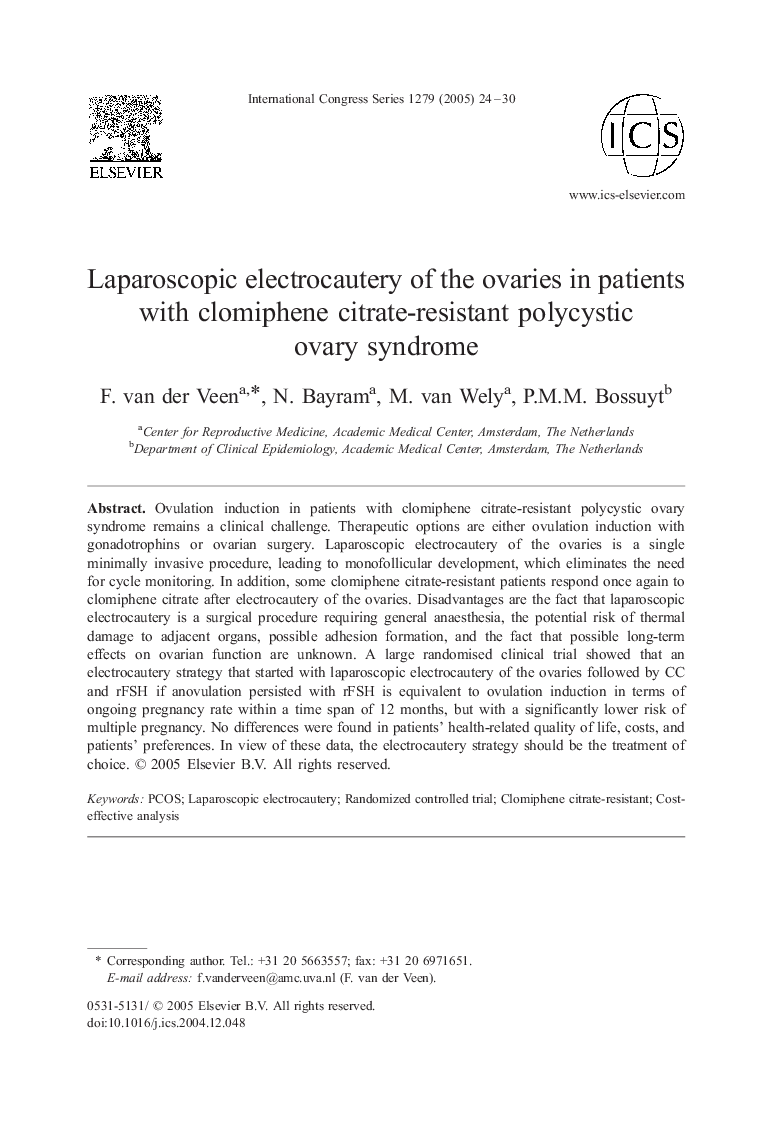| Article ID | Journal | Published Year | Pages | File Type |
|---|---|---|---|---|
| 9021915 | International Congress Series | 2005 | 7 Pages |
Abstract
Ovulation induction in patients with clomiphene citrate-resistant polycystic ovary syndrome remains a clinical challenge. Therapeutic options are either ovulation induction with gonadotrophins or ovarian surgery. Laparoscopic electrocautery of the ovaries is a single minimally invasive procedure, leading to monofollicular development, which eliminates the need for cycle monitoring. In addition, some clomiphene citrate-resistant patients respond once again to clomiphene citrate after electrocautery of the ovaries. Disadvantages are the fact that laparoscopic electrocautery is a surgical procedure requiring general anaesthesia, the potential risk of thermal damage to adjacent organs, possible adhesion formation, and the fact that possible long-term effects on ovarian function are unknown. A large randomised clinical trial showed that an electrocautery strategy that started with laparoscopic electrocautery of the ovaries followed by CC and rFSH if anovulation persisted with rFSH is equivalent to ovulation induction in terms of ongoing pregnancy rate within a time span of 12 months, but with a significantly lower risk of multiple pregnancy. No differences were found in patients' health-related quality of life, costs, and patients' preferences. In view of these data, the electrocautery strategy should be the treatment of choice.
Related Topics
Life Sciences
Biochemistry, Genetics and Molecular Biology
Molecular Biology
Authors
F. van der Veen, N. Bayram, M. van Wely, P.M.M. Bossuyt,
